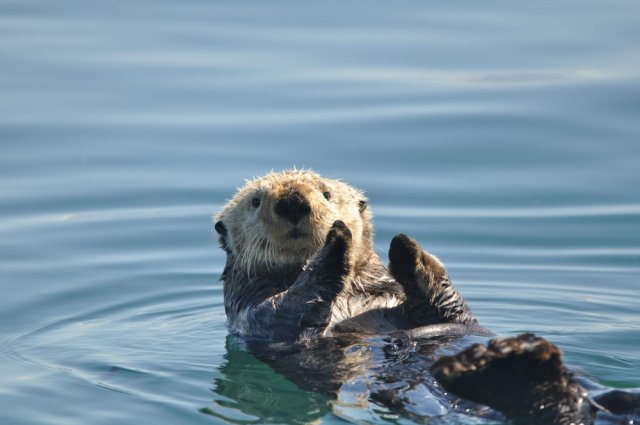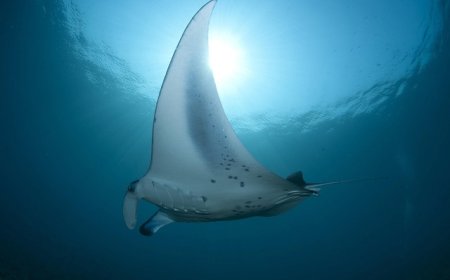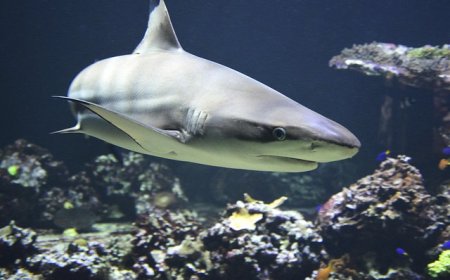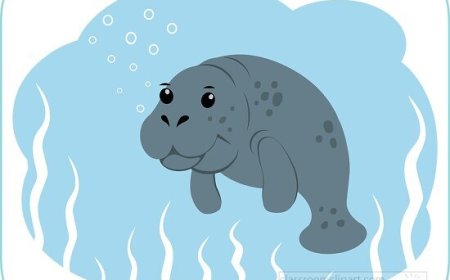All About Sea Otters for Students: Floating Forest Guardians
earn all about sea otters in this educational article for students. Discover how these smart marine mammals use tools, care for kelp forests, and stay warm in cold waters. Includes quiz, vocabulary, and kid-friendly summary!

🦦 Sea Otters: Floating Forest Guardians
Sea otters are small, furry marine mammals that live along the coasts of the northern Pacific Ocean. Famous for their playful behavior and habit of floating on their backs, sea otters are also one of the smartest and most important animals in their ecosystems. They are known for using tools to crack open shells, holding hands while sleeping, and playing a key role in protecting kelp forests.
Sea otters are members of the weasel family (Mustelidae) and are among the few marine mammals that do not have blubber to stay warm. Instead, they have the densest fur of any animal—up to 1 million hairs per square inch—which helps keep them warm in chilly waters.
🌍 Habitat and Geographic Range
Sea otters live in coastal marine environments, especially in:
- Kelp forests
- Rocky shores and tidepools
- Estuaries and shallow coastal waters
They are found along the northern Pacific Rim, including:
- Alaska and British Columbia
- The coast of California
- Russia and northern Japan
Sea otters spend almost all of their lives in the ocean. They eat, sleep, groom, and even give birth in the water, only occasionally coming to shore.
🦐 Diet and Feeding Behavior
Sea otters are carnivores that eat a wide variety of marine animals. Their favorite foods include:
- Sea urchins
- Clams and mussels
- Crabs and snails
- Fish and octopuses
They have a very high metabolism and must eat up to 25% of their body weight every day—that’s like a 60-pound child eating 15 pounds of food daily!
Sea otters are one of the few non-human animals that use tools:
- They carry rocks under their armpits
- They use the rocks to smash open hard shells while floating on their backs
- They also use kelp as an anchor, wrapping themselves in it to stay in place while eating or resting
🧥 Adaptations and Physical Features
Sea otters have several adaptations that help them survive in cold ocean waters:
- Thick fur: ultra-dense to trap air and insulate
- Webbed feet: back feet act like flippers
- Strong front paws: for digging, gripping prey, holding tools
- Flexible bodies: twist and turn easily in water
- Air pockets: fur holds air to help them float
Otters groom constantly to keep their fur clean and fluffy. Dirty fur lets water reach skin, which can be deadly. That is why oil spills are especially dangerous.
👥 Social Behavior and Daily Life
Sea otters are often seen floating in groups, called rafts. A raft can include a few otters or over 100. They are social but not as tightly bonded as dolphins.
Fun behaviors include:
- Holding hands to keep from drifting apart
- Playing games like diving and chasing
- Teaching pups to hunt by showing live prey
Sea otters are very attentive parents. A mother carries her baby on her belly and grooms, feeds, and protects it. When she dives, she may wrap her pup in kelp.
🍼 Life Cycle and Reproduction
Female sea otters give birth to one pup at a time, usually in the water. Pups:
- Are born with fluffy, golden-brown fur
- Float naturally, since baby fur traps air
- Cannot dive for weeks, so they stay on their mother’s chest
Mothers nurse pups for about 6–8 months, teaching them how to dive, find food, and groom.
Sea otters mature at about 4–5 years old and can live up to 20 years in the wild.
🌱 Ecological Role and Kelp Forests
Sea otters are a keystone species. They help:
- Control sea urchin populations that would otherwise destroy kelp
- Maintain habitat balance in coastal ecosystems
- Support biodiversity by keeping kelp forests alive
Without otters, kelp forests can disappear, affecting hundreds of species.
⚠️ Threats and Conservation
Sea otters were once hunted nearly to extinction for their fur. Populations fell to just a few thousand. They have rebounded, but threats remain.
🚨 Threats include:
- Oil spills – destroy insulating fur
- Fishing gear entanglement
- Pollution and toxic algae
- Climate change – affects prey
- Sharks and killer whales in some regions
🛡️ Conservation efforts:
- Legal protection (Marine Mammal Protection Act)
- Rescue and rehabilitation of injured otters
- Habitat restoration and kelp protection
- Public education and eco-tourism
Organizations like the Monterey Bay Aquarium and Defenders of Wildlife help monitor and protect populations.
🎉 Fun Facts About Sea Otters
- They have pockets under their arms for storing rocks and food
- They hold hands while sleeping to stay together
- Their fur is so dense that water never touches their skin
- A group is called a raft
- Otters juggle rocks—and scientists aren’t sure why!
🧠 Vocabulary List
- Carnivore – an animal that eats meat
- Kelp forest – underwater forest of large seaweed
- Blubber – fat for warmth (otters don’t have it!)
- Keystone species – large impact on ecosystem
- Raft – group of otters resting together
- Grooming – cleaning and caring for fur
- Entanglement – getting caught in nets or ropes
- Tool use – using objects to complete tasks
- Insulation – protection from cold
- Armpit pouch – skin flap for storage
✅ Sea Otter Quiz: How Otter-ly Smart Are You?
1. What do sea otters eat the most?
A. Seaweed
B. Fish and squid
C. Crabs, sea urchins, and shellfish
D. Coral
Answer: C. Crabs, sea urchins, and shellfish
2. What makes sea otters different from many marine mammals?
A. They have no fur
B. They live on land
C. They don’t have blubber—they rely on thick fur
D. They fly
Answer: C. They don’t have blubber—they rely on thick fur
3. What is a group of sea otters called?
A. Pod
B. School
C. Pack
D. Raft
Answer: D. Raft
4. What is one danger to sea otters?
A. Too much food
B. Oil spills and pollution
C. Earthquakes
D. Cold water
Answer: B. Oil spills and pollution
5. How do sea otters crack open shellfish?
A. With their teeth
B. Using electric shocks
C. With rocks
D. By freezing them
Answer: C. With rocks
🧒 Kid-Friendly Summary
Sea otters are small, smart marine animals that live in cold ocean waters. They have thick fur to stay warm, and they float on their backs while eating or sleeping. They are one of the only animals that use tools, like rocks, to open food!
Sea otters are very important because they help protect kelp forests by eating sea urchins. People work hard to keep them safe from pollution and other dangers so they can keep playing, floating, and helping the ocean.




















































